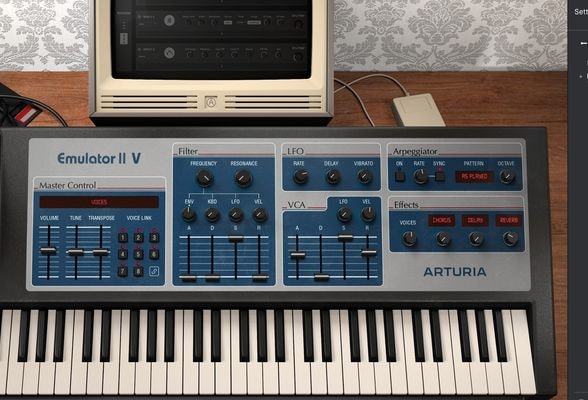

Each of these can be assigned up to 50 Times Slices too, which are essentially parameter snapshots that can be used to sequence animation within sounds across a duration of up to 300 seconds.

The number of Partial Timbres (individual synth engines) that can be layered together to create a full patch has been increased from four to 12. The already powerful FM and digital engines have been beefed-up for this plug-in version too. Even if you were to strip it of all historical context and remove the nostalgia factor, you'd still be left with a powerful, multi-engine digital synth capable of going toe-to-toe with any of its contemporary plug-in rivals. Whether the Synclavier is faithful to the original or not is almost beside the point here anyway. The combination of additive and FM synthesis approaches opens up a world of timbral complexity, and the Synclav's deep editing capabilities allow for the creation of highly detailed sounds with a whole lot of movement. While we've not been lucky enough to spend sufficient time with an original Synclavier in order to judge how close the plug-in's behaviour is to that of its forebear, there's no doubt that sonically the Synclavier V is absolutely on point.Įven the most cursory scroll through the plug-in's presets demonstrates the huge range of rich and sonically complex sounds the synth can create from retro-sounding leads to gorgeous digital strings, glistening pads and ominous, soundtrack-ready drones.

NED co-founder Cameron Jones - who wrote the original's OS - has been brought on board to assist with creation of the emulation. "Sonically the Synclavier V is absolutely on point and can create a huge range of rich and complex sounds."Īrturia's take on the Synclav focuses purely on the synth elements of the original, foregoing the more workstation-like features in favour of replicating the full FM and additive engines and expanding on the capabilities of both. As a result its sound is quintessentially '80s, instantly bringing to mind classic soundtracks and the bold, polished sound of early synth pop.

Unsurprisingly the Synclav was very expensive - and is even more so vintage - but it still made its way into the studios of many notable pop producers and soundtrack composers. The original Synclavier was a direct competitor to the Fairlight CMI, which combined sampling and sequencing with additive and FM synthesis into a huge proto-workstation that required a rack-mounted CPU and its own (at the time hugely-powerful) 16-bit operating system. Certainly the most exciting of the new additions is the Synclavier V, a software recreation of New England Digital's hugely powerful digital synthesizer from the late-'70s/early-'80s.


 0 kommentar(er)
0 kommentar(er)
